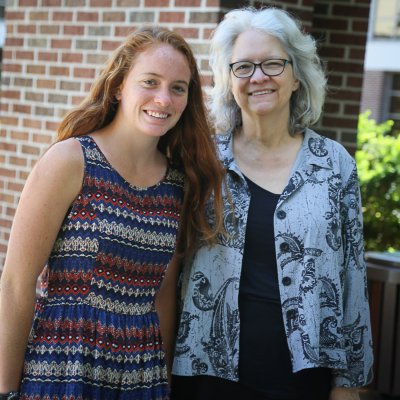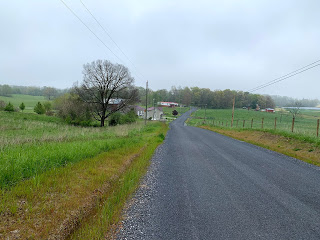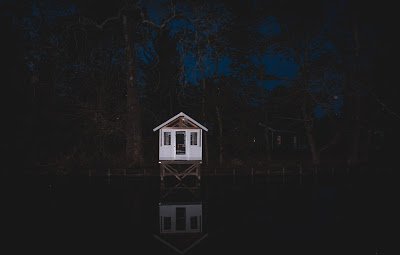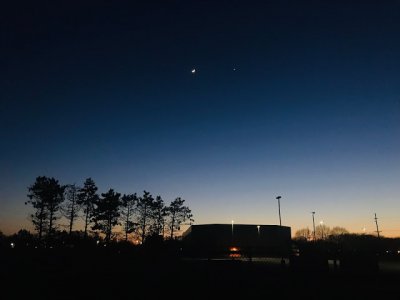‘Walking in the World’ class takes on new meaning for students in quarantine
By Mackenzie Miller ’21

When Professor of English Ann Hostetler proposed a new course, Walking in the World, for her final May term before retirement, she couldn’t have predicted that students would be walking across all regions of the country, quarantined in the places many of them call home.
This mindful walking takes place amid a pandemic, which Hostetler said they didn’t plan for, but have made it work.
“This [opportunity] was given to us,” she said. “It gave us the excuse to innovate a little bit more.”
From Indiana to New Mexico to Colorado to Virginia, students in the Goshen Core class explored the relationship between human ideas and environmental engagement, all while participating in the act of walking.
“I was captivated with the idea because before we had cars, there were so many writers and artists or musical composers who walked a lot as part of their creative process,” Hostetler said. “It led to a lot of creative thinking about things like writing and walking and the natural world.”

The class was pioneered as a Hickory Scholars project by Hostetler last summer, with assistance from Joel Pontius, assistant professor of sustainability and environmental education; Sierra Ross Richer, a junior exercise science major from Goshen; and Sophia Martin, a 2020 graduate with a history degree from Lititz, Pennsylvania. The four worked together to explore an interdisciplinary approach to sustainability through writing and walking in nature.
Hostetler is now co-teaching the course with Pamela Carralero, interim visiting assistant professor of English, who has focused much of her research and study on human connection to the environment.
“My specialty is the environmental humanities,” Carralero said. “Conceptual bridges between what we usually see as just the sciences and the humanities brought together.”
Carralero has introduced environmental concepts such as ‘umwelt’ developed by German philosopher Giorgio Agamben, which refers to the specific relations each living creature has with its environment. The term is used to mark the radical difference between what humans understand and experience as an “environment,” and what other living creatures experience as an environment.
“How do we rethink ourselves as human beings by doing this very normal, almost mundane action of walking and thinking about our connection to the environment,” Carralero said.
The class was to be held at Merry Lea Environmental Learning Center, but when it was moved online Hostetler and Carralero both knew meeting as a class would be essential for processing the experience and discussing the diverse number of texts assigned.
Fifteen students have since met online each weekday for three weeks, taking a break in the middle of each four-hour session to walk outside.
“We’re marrying our discussions of the readings and our more conceptual discussions (on walking) to the actual experience of walking that we just had,” Carralero said.
For some students, this act of walking is familiar.

“I have always enjoyed taking walks,” said Khampha Stempel, a senior sustainability management major from Harrisonburg, Virgina. “But this class has provided me with more tools to be an active and observant walker. Walking is a practice of mindfulness and is one tool to actively connect with the environment around us.”
For others, unplugging from technology is a bit more of a challenge.

“During my walks I realized that there was so much to walking that I needed to learn,” said Chelsea Foster, a senior history major from Indianapolis, who is taking this class while still on campus in Goshen. “There was so much that I hadn’t engaged with or interacted with yet. I started to pay attention more, and my eyes were opened to this whole new world I was neglecting.”
Hostetler and Carralero have expanded this idea of walking to touch upon themes of borderlands, race, class and gender.
“Some students are near reservations or national parks that have Native American backgrounds,” Carralero said. “Talking about the Native American readings and having students in that setting leads to questions such as, ‘Do you see yourself as an outsider on your land?’”

When Gogo Liegise, a senior molecular biology/biochemistry major, walks on the Winona trail in Goshen, he is reminded of his home in Nagaland, India, and the struggle to find his place.
“Growing up in a rather rural setting in India, walking was one of the main means of transport. Whether it was walking with a purpose or walking for leisure, it has always been a part of life,” he said. “The yearning for a sense of belonging in a place like this has been a constant struggle for me, especially in taking this class. And in struggling, I have learned that you can appreciate and value the land that you occupy even though it may not be the land of your ancestors or origin.”
Each student has created a public blog as a part of the course, sharing their writing with others in the class across a distance. Both Carralero and Hostetler participate in the walking and some of the writing.
“I think we would have had a very different course if we had taken for granted the outside in any kind of normal, non-pandemic circumstance,” Carralero said. “In quarantine, we’re so separated from the going on of the outside world, but to be able to get out and to walk, even if you’re alone, kind of maintains that connection and sense of community.”
When classes moved online, Hostetler reconsidered whether or not she wanted to teach a different course, one she had taught before.
But she was “way into” this Walking in the World class, she said. “We have so much to learn about the world we live in, and our lifestyle alienates us so much from that knowledge that just getting to know the familiar in a new way is a real gift.”




